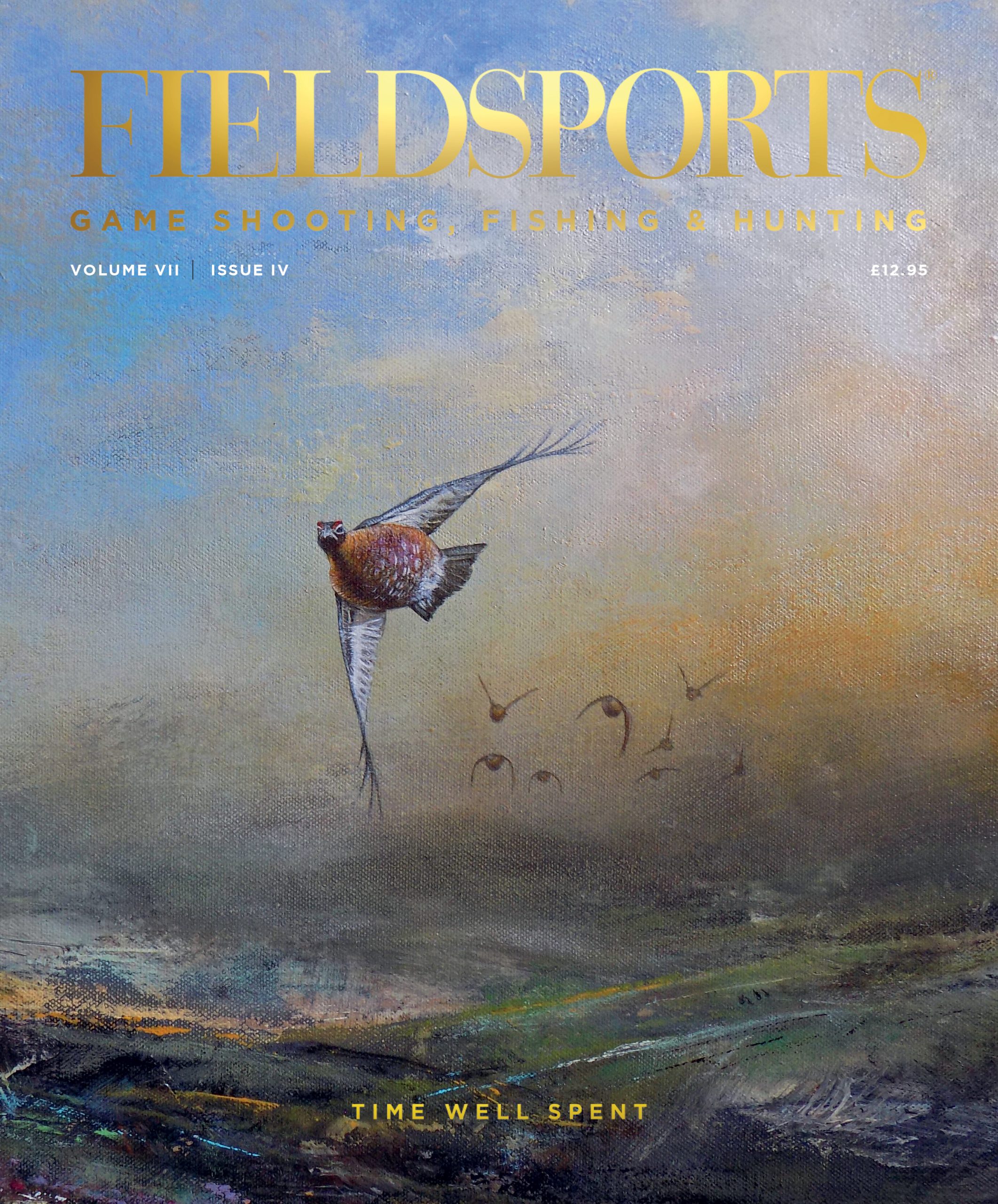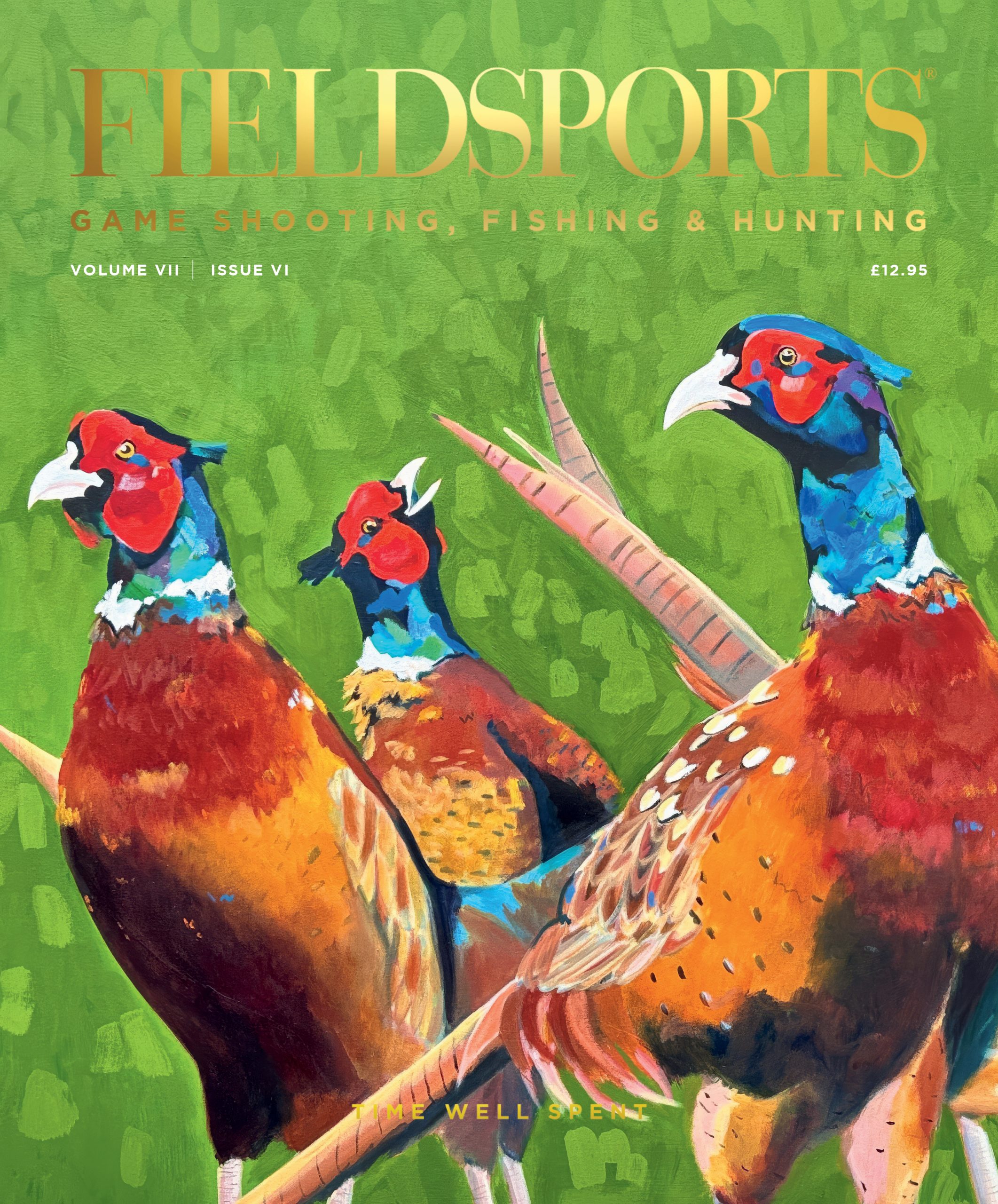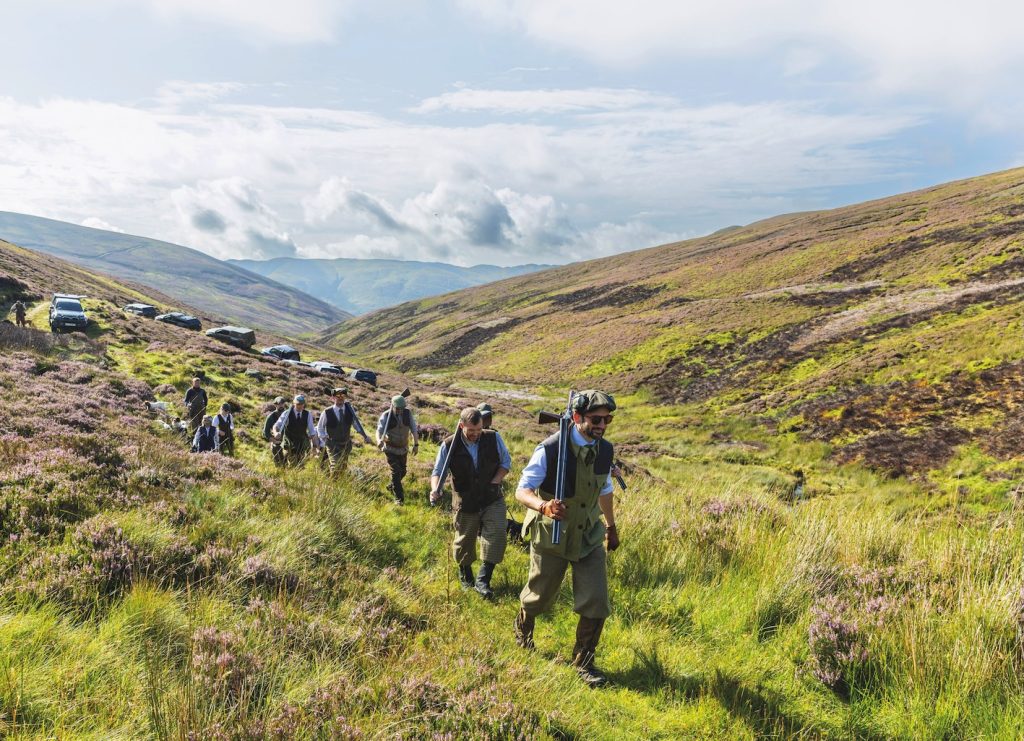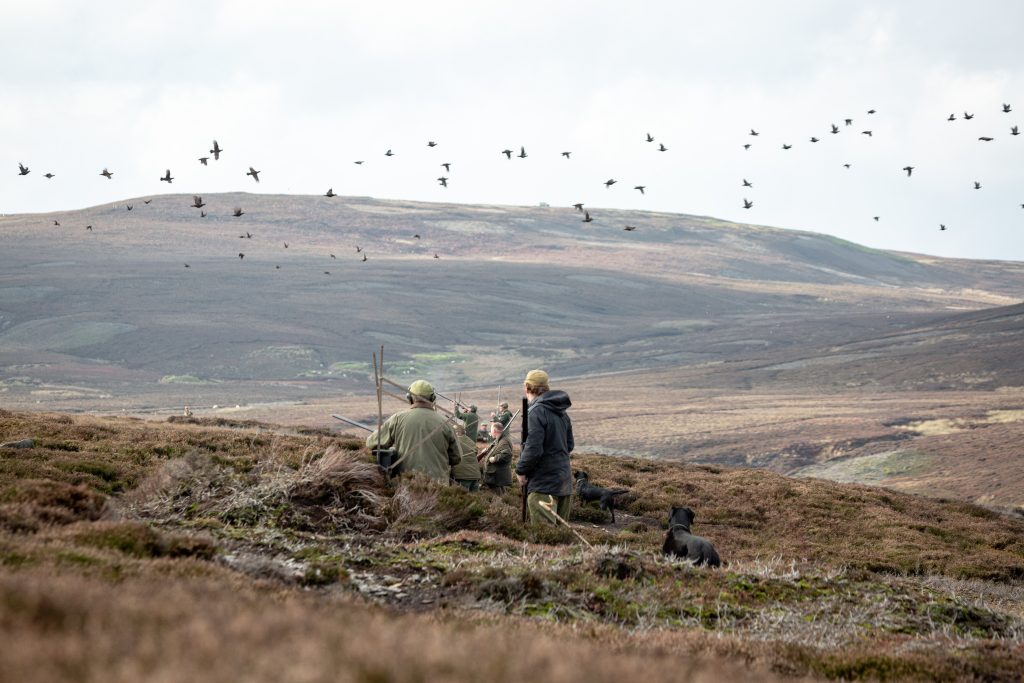The lesson of Langholm Moor
What really happened at Langholm Moor? This is a case study in land management, ambition, and unintended consequences.
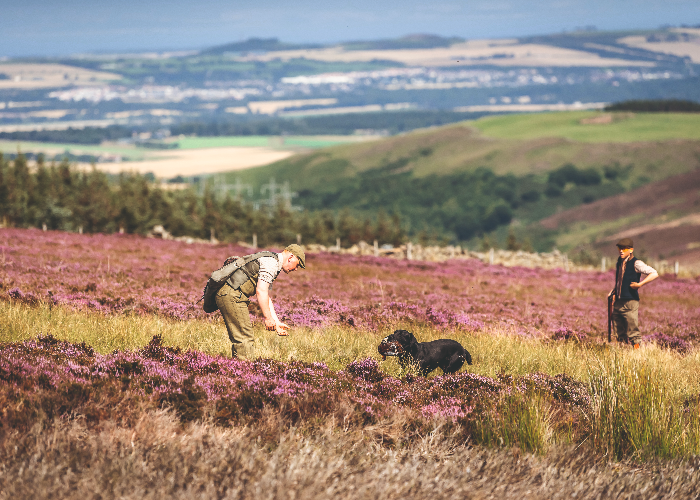
The Scottish Borders have a rich history of conflict. Not just open warfare between rival nations, but every sort of skulduggery. Cattle rustling, blood feuds, kidnapping, murder and mayhem are engrained in the landscape. For centuries, the little town of Langholm played its part in this hurly burly. Then finally, there came peace. A hundred years without conflict. If you drive through now on the way to fish the middle Tweed or perhaps taking the scenic route to Edinburgh everything seems peaceful. You would be mistaken. As you drive up the beautiful Ewes Water Valley, to the east lies Langholm Moor: a place of desolation and conflict.
Once a productive grouse moor
In the days when it was a part of the Duke of Buccleuch’s estate it was a productive grouse moor, also providing seasonal grazing for sheep and cattle. It gave all or part of a living to over 20 families; gamekeepers, farmers and shepherds. It also had an importance in the local community. When the grouse shooting was on there was money to be earned and fun to be had. The annual injection of cash into the pockets of beaters, loaders, flankers, pickers-up, caterers, hotels and pubs, enlivened and enriched the place financially and socially.
As a result of the keepering efforts, improving habitat and controlling predators, the moor was rich in wildlife. Ground-nesting birds thrived to such an extent that the moor was designated as an SSSI for its upland bird assemblage, and an SPA for nesting hen harriers.
The hen harriers increase in number
It was the hen harriers that started the rot. Always a controversial bird, it was decided to use Langholm Moor for what was known as the Joint Raptor Study (JRS) This looked into the impact harriers could have if they bred undisturbed in the presence of traditional game keeping. Starting in1992, the JRS, involving GWCT, SNH, NE, the estate and RSPB, ran for seven years. This produced a great deal of peer reviewed science, but the short hand version is that the bird assemblages crashed.
Eagles and peregrines are territorial, limiting their own population density, hen harriers are not, and happily nest in loose colonies. Where there are lots of voles and meadow pipits, they can just keeping increasing. When they are hunting for voles and pipits they take any small bird they encounter, and with over 20 pairs on the moor, all the chicks of curlew, lapwing, grouse and the rest were predated to near extinction.
In 1997, the decision was made to close the project down, except for GWCT monitoring bird numbers. On a moor where the sole surviving feature of value was the unprecedented numbers of harriers, their population crashed. With the gamekeepers gone, and no control of foxes, stoats, or corvids, the ground nesting hen harriers were predated into terminal decline.

Keepering returns to Langholm Moor
In 2007, faced with the imminent extinction of the bird that the whole thing had been supposed to be about, SNH was keen to have anther go, and the partnership entered its third phase. This was intended to see if adaptive management would enable the moor to have the best of all worlds the social, economic and environmental benefits of driven grouse shooting and a healthy population of hen harriers. Keepering was reinstated, but this time with diversionary feeding of nesting harriers.
In view of the RSPB’s current attacks on grouse moor management, it is worth pointing out that had they genuinely believed that driven grouse shooting had no social, economic or environmental benefits there would have been no point in them taking part in the project at all. It is also noteworthy that RSPB had no problem with snaring foxes, trapping stoats and weasels, applying for a licence to control ravens or rotational burning of heather.
The results were mixed, but positive in many ways. The hard work of the keepers resulted in an increase in everything apart from foxes, stoats and crows. The harrier numbers built up to exceed the SPA targets. Diversionary feeding was hard work, but reduced grouse chick predation to manageable levels. The numbers of ground nesting birds, and mountain hares started to recover. Merlins went from one to a dozen pairs. Increasing black grouse numbers saw old lek sites repopulated, and the calls of curlew and lapwing filled the air once more.
While red grouse recovered, they never quite reached a level at which driven shooting was justified, and as the RSPB found it impossible to accept any of the adaptive management solutions that might have led to a balanced and sustainable solution, the project was reluctantly wound up for the second time.
The Initiative takes over the reins
The moor was eventually sold with an enormous fanfare to the Langholm Initiative, in what was hailed as a community buy out, although most of the £3.8 million came from government and rich rewilders, not the sensible citizens of Langholm, and the final act began. Obviously, there is no shooting, and the gamekeepers are a distant memory. Where nature was once so rich, and diverse, is now the Tarras Valley Nature Reserve.
One of the oddities of the arguments surrounding grouse moor management is its theoretical nature, when in fact almost everything is already available for inspection. In my lifetime, we have lost 40% of our heather moorland, and the rate of loss is once again increasing. So every alternative use and management is out there, and can be easily assessed, and is always found to be worse than the much maligned grouse moor it replaced.
Except, until Langholm Moor, community ownership. So, where are we? We have a base line thanks to the GWCT project monitoring from 1997 until the establishment of the nature reserve when the monitoring was stopped. Why the new management does not want regular independent assessment of their performance is unknown, but it is a pity. We are therefore forced back on personal observations of individual experts.
They all paint an unhappy picture. They all agree that the bird assemblages for which the moor was designated are more or less gone. They could find no mountain hares or black grouse, and precious few of anything else. The hen harriers still exist in much lower numbers, and last year at least one nest fledged some chicks. Otherwise ground nesting birds above pipit size are extinct or nearly so.
It is not that the Initiative on Langholm Moor lacks ambition. Its public statements are ambitious. It wants to be so rich in wildlife that it is the most visited nature reserve in the land. What it lacks is not ambition, but the courage to do what is needed. There will be no predator control, and without it the curlew, lapwing, black grouse and the rest are doomed. If there is habitat management it is difficult to find. What was heather moorland is now covered with such a burgeoning stock of invasive sitka spruce and birch and will be more forest than heather moor in a decade.
When I walked over it a few weeks ago, the contrast with the moor as I knew it, in its pomp, was stark. Instead of the sounds of curlew and lapwing there was silence. Instead of seeing hen harriers hunting the verges, and merlin sweeping over the heather I saw some crows. The mosaic of different aged vegetation typical of a managed moor was replaced by rank heather, grass, sitka and birch.
Driven grouse shooting is not intended to be profitable, but it generates enough income to fund the management that is essential to keep these rare and special places in existence. Without it the system collapses. That is not speculation, it happens repeatedly. The state, the local authority, NGOs, all fail. To that may soon be added the community.
Related Articles
Get the latest news delivered direct to your door
Subscribe to Fieldsports Journal
Elevate your experience in the field with a subscription to Fieldsports Journal, the premium publication for passionate country sports enthusiasts. This bi-monthly journal delivers unparalleled coverage of game shooting, fishing and big game across the UK and beyond.
Each issue offers a stunning collection of in-depth features, expert opinions and world-class photography, all presented in a timeless yet contemporary design.
Save 10% on shop price when you subscribe, with a choice of packages that work for you. Choose from Print & Digital or Digital only with each journal delivered directly to your door or via the app every other month, plus access to past issues with the digital back issue library.
